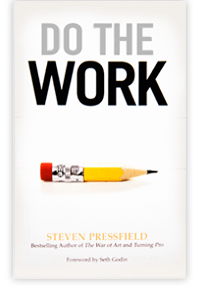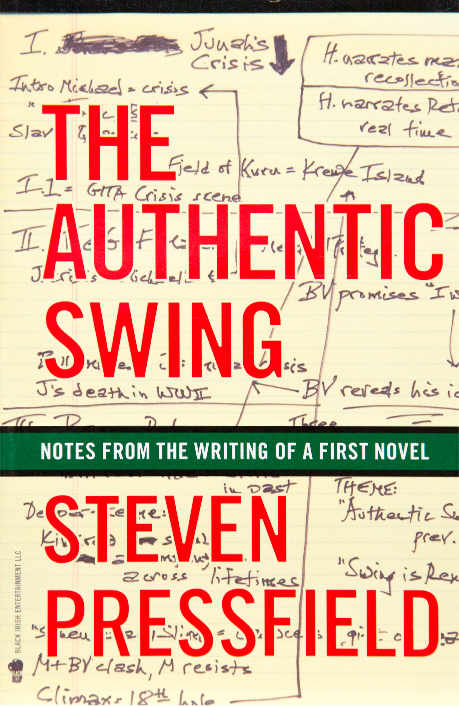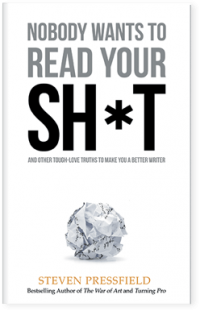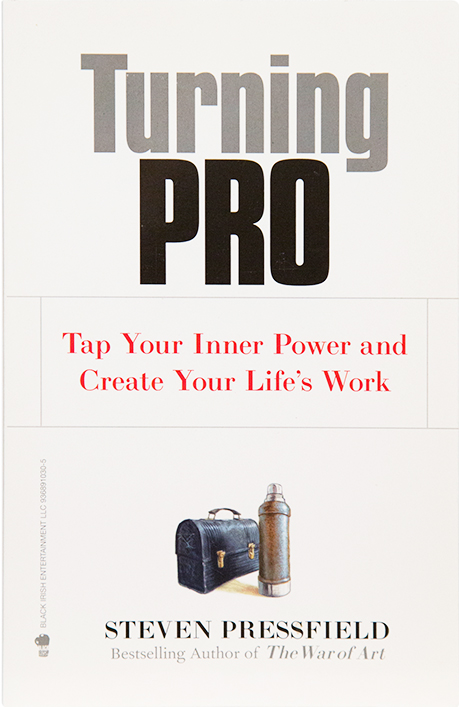The Understory

I was laid up in bed with the flu this week and wound up watching the first two Bourne movies, starring Matt Damon, back-to-back. The experience got me thinking about the Understory.

Matt Damon chasing the Understory in "The Bourne Identity"
When I start a new book, I open a file and title it UNDERSTORY. The understory is the architecture that undergirds and supports the surface story.
In the first Bourne movie, The Bourne Identity, the surface story starts like this:
Jason Bourne is floating unconscious at sea, with two bullets in his back. A fishing boat rescues him. When he comes to, JB has no memory of who he is or how he got into this situation, but he discovers that he possesses certain lethal skills–i.e., he’s a great hand-to-hand fighter, he knows instinctively how to case a joint, etc.
That’s the surface story.
The understory is that JB is a CIA-trained assassin. His last mission (immediately before the movie’s start) was to kill an African diplomat aboard a yacht at sea. He failed somehow, got shot, and wound up in the drink.
Jason himself, of course, knows nothing of this. Neither do we, the audience.
The Bourne movies are amnesia stories. An amnesia story represents the classic surface story/understory dynamic. The whole movie/book is about the hero uncovering the understory.
In the climax, the understory surfaces and merges with the main story.
Chinatown by Robert Towne is another terrific understory story.
(I’m aware that many readers of this blog are not familiar with Chinatown. It’s before their time. This ommission, I suggest, should be remedied ASAP. Please, if you haven’t seen Chinatown, netflix it tout de suite. Not only is the movie great fun, but it’s such a classic of storytelling that you can study it for years [I have] and never run out of new things to discover.)
Here’s the surface story of the start of Chinatown:
Jake Gittes (Jack Nicholson) is a flashy L.A. private eye. Into his office walks a well-dressed woman who identifies herself as Evelyn Mulwray, wife of Water Commissioner Hollis Mulwray. Mrs. Mulwray suspects her husband is having an affair and hires Jake to tail him. Sure enough, as Jake puts the eyeball on the water commissioner, he discovers him meeting clandestinely with a very attractive and mysterious young woman. Suddenly Jake’s findings appear in the newspaper, prompting a scandal. Jake is mystified. How did this happen? Now the door to his office opens again. This time in walks Faye Dunaway. She identifies herself as the real Evelyn Mulwray. She is furious about the scandal and informs Jake that he will hear from her lawyer.
EVELYN MULWRAY
I see you like publicity, Mr. Gittes. Well, you’re about to get it.
That’s the surface story.
What’s happening underneath is that Jake is being set up by someone with unknown evil designs. That person hired the fake Mrs. Mulwray (to sucker Jake) and planted the story in the newspaper (using Jake’s reputation as an attention-seeker to give it credibility). That person will eventually kill both Hollis Mulwray and the fake Mrs. Mulwray–and that’s only the start of his nefarious scheming.
As writers, we must know the understory cold. At any point in the surface story if we were asked, “What’s going on here?”, we must be able to explain by citing the understory.
There’s a difference between the understory and the backstory. Backstory explains a character’s individual past and hints at her motivation. Understory is the story-architecture supporting the surface story.
The first Hangover, written by Jon Lucas and Scott Moore, is another great understory story. When the buddy-characters Stu, Alan, and Phil (Ed Helms, Zach Galifianakis, Bradley Cooper) wake up in their Vegas suite with no memory of the night before but with a live tiger in the house, Stu missing a front tooth, and their friend Doug (Justin Bartha) missing entirely, we know that the whole movie will be about uncovering the understory.
Part of the fun of watching a movie or reading a novel is trying to figure out the understory. The audience is trying to solve it along with the protagonist. In Chinatown and the Bourne movies, the audience is ahead of the protagonist. They know more than he does. In The Hangover, we in the audience uncover the mystery step-by-step along with the guys.
In other words, the global story is unfolding simultaneously on two levels: surface story and understory. The surface story in many ways is simply the unearthing of the understory.
The better and more interesting the understory, the better and more interesting the surface story.
The more the understory differs from the surface story, the more intriguing it will be for the audience–and the more fun.
Certain tricks are sometimes used to deliver the understory to the reader/audience. Flashbacks. Voiceovers. Straight-out exposition scenes. It’s the mark of strong storytelling to get the understory out in drama and in conflict, without resorting to these devices.
I’ve found that a good way to organize an understory file is by making a timeline.
I will literally graph the action, day by day, hour by hour. Almost always the understory starts before the surface story. In certain Greek tragedies, the understory begins in a previous generation, even two or three generations. It may go back all the way to Olympus, to the gods themselves.
In the story’s climax, the understory rises to the surface. It becomes part of the surface story. As one is resolved, so is the other.
In Chinatown, the moment is the classic “She’s my sister, she’s my daughter, she’s my sister and my daughter” scene. The Bourne movies do a brilliant job of revealing just enough of the understory to satisfy us for this movie, but leaving us wanting more from the sequel. And the sequel. And the sequel.
A case could be made that you and I are living our lives–our real lives–on two levels. The surface story is what we do every day. What’s our understory? What’s yours?
Will it surface one day? In the end, isn’t that what we’re working for in everything we do–to discover our own understory? To answer Stanislavsky’s three questions: Who am I? Why am I here? What do I want?




When I saw in the text the words Bourne and (first)Hangover, I was aware of what to expect (since both movies were mentioned in previous posts).
But Greek Tragedies?
I didn’t see that coming!
The silent comedian Harold Lloyd’s last movie, “The Sin of Harold Diddlebock” (aka “Mad Wednesday”) is also a terrific ‘understory’ movie, as Harold awakens with a hangover on Thursday as the new owner of a dilapidated circus (and an even more dilapidated tame lion) after somehow acquiring both during a drinking binge that lasted from Tuesday through Wednesday.
The most hilariously, side-splittingly funny scene I ever seen on film has Harold and his near-sighted companion suspended from a ledge seven stories above a New York street by one of his shoes stuck in the lion’s leash. [Made even funnier by the following scene of an ’empty’ shoe hanging from the leash.] All of this unfolds as part of Harold’s effort to unload himself of the circus (and the lion).
The last two lines of the film reveal exactly what else Harold Diddlebock had been up to during that Mad Wednesday.
Well, I’ll have to check this out!
interesting post. Makes me want to dig through some of my works in progress and consider the implications. Thanks!
Great timing on this post. I’m working on a screenplay that will be turned into an old time radio show podcast. While I’ve heard of backstory, I had not heard of understory. Great concept and one I will be exploring more of. Thanks for the enlightenment.
This reminds me somewhat of Hemingway’s Iceberg Theory. Like the 90% of an iceberg that’s underwater, the Understory is bigger and more important than the story you see.
I’ve been considering the appeal of different genres recently, and the opposition to them (past and present). I worked through SF&F a while ago. Mystery’s turn – Edmund Wilson’s “Who cares who killed Roger Ackroyd” and Christopher Booker’s relegation of serials – recurrent protagonists – most prominent in the detective story as paradigmed by Holmes and Christie – to indulgence adolescent. “…where the ego can fantasize about enjoying the rewards of Self without having to go through the deeper processes required to achieve it.”
But of course not only those rescued by the Hero (Holmes, Poirot, Castle, etc.) go through the deeper processes. The Hero of Heroine does so as well. But the Hero’s journey here is a sine wave of sorts, a series of episodes each of which leads to and through the “deeper processes.” Where 19th century episodic novels did this first in magazine serials (Dickens, for example), it is now done in a series or series TV.
What Wilson and Booker missed, then, is the Understory. The Surface Story is the plot of just this book (or episode); but the Understory is the whole opus. Can anyone really read Holmes, as he should be read, and not be moved to contemplate his (and Watson’s, for that matter) Understory. Surely the three questions drive Mystery – they are, after all, the central mystery.
Thanks for such a thought-provoking and inspiring post. But then, that happens every week.
And I’m glad you’re feeling better!
Speaking of Writing Wednesdays: The silent comedian Harold Lloyd’s last movie, “The Sin of Harold Diddlebock” (aka “Mad Wednesday”) is also a terrific ‘understory’ movie, as Harold awakens with a hangover on Thursday as the new owner of a dilapidated circus (and an even more dilapidated tame lion) after somehow acquiring both during a drinking binge that lasted from Tuesday through Wednesday.
The most hilariously, side-splittingly funny scene I ever saw on film has Harold and his near-sighted companion suspended from a ledge seven stories above a New York street by one of his shoes stuck in the lion’s leash. [Made even funnier by the following scene of an ’empty’ shoe hanging from the leash.] All of this unfolds as part of Harold’s effort to unload himself of the circus (and the lion).
The last two lines of the film reveal exactly what else Harold Diddlebock had been up to during that Mad Wednesday.
Yes…..I knew something was missing in my current work. I know the understory, and it is eluded to ‘faintly’ in parts. I now see that it will have to play a bigger role in the over all plot. Thanks Steve.
Seems to me the understory is much of the reason for the popularity of disguised superhero movies (Superman, Batman, etc.). Because the heroes must keep their identity secret, they are forced to fight their understory battle alone, at least for the most part, and a ton of audience sympathy is generated.
Nice thought!
(And a prototype one, I must say!)
This post really set the wheels spinning in my head. The first “Matrix” film strikes me as brilliantly playing with the surface story-understory dichotomy. Neo begins the film as an unhappy worker in a drab world, and, by choosing the red pill, has the understory (humanity has been enslaved by machines) revealed to him, and struggles to become enlightened in the reality he finds himself in, shifting back and forth between the surface world and the underlying one, between the surface story he was embedded in and the understory which holds his true fate.
excellent article
I DO KNOW and LOVE that movie China Town! Saw it a long time ago.
Hey Steve–what’s a little like looking through a tunnel that turns into a pipe?
We all blog to you, and you write these wonderful articles, but yet I never hear from you about what I wrote and very few bloggers here respond to each other’s blogs.
Are you OZ?
You know, you just might have really helped me out of a jam I’ve been stuck in for the better part of a year! I need to get my understory worked out to facilitate my surface plot. I guess I sort of knew this, in a nebulous unconscious sort of way, but the clarity offered in this article is the kick in the pants I needed. Thanks a ton!
I was just watching one of those police procedural shows that has matured to the point where it has expanded into multiple cities. I couldn’t help but marvel a bit at about how senseless the plot was if you thought about it, after you watched the episode. The antagonists were often motivated by events that hadn’t happened yet. They were also able to instantly know everything shown to the audience, even though they had no inside accomplices to spy on the cops.
I guess you really aren’t supposed to think too hard about it. Here’s hoping your Writing Wednesdays are required reading for all of TV’s writing teams!
I know in my heart the duality of overstory and understory, but I’d never have been able to articulate it if someone prompted me. I thrive on understory. Blame it on Paul Auster, he got me hooked. And yet for all his masterful use of the under over dynamic, for all I’ve come to love and utilize it myself, I couldn’t have told you exactly what it is.
Almost everything you’ve posted I already know on a subconscious level. Not just this post, but all back through the archives. You’ve just got a way of exemplifying and codifying this stuff that makes it consciously graspable.
I don’t know how you keep doing it, Steve, but keep doing it. Pretty sure I don’t need to tell you to give us what you’ve got. Thanks.
Great post! Saw Chinatown so long ago (maybe in the early days of HBO?) that I must rent it now and watch it again. As for my own understory, that’s gonna take some digging. May need to ask my therapist…haha. Still, all good food for thought, even for this creative non-fiction writer. Thanks and hope you’re over the flu.
Thanks for another brilliant post, Steven! Huzzah, timelines! I can’t get enough of ’em.
One of the many books on writing I’ve read addressed the architecture of the understory by suggesting that the writer first develop the story from the antagonist’s POV. The author (James N. Frey, I think) referred to this as making the villain the ‘author of the plot.’ After all, once we know what the bad guy wants and what he/she is willing to do (and has already done) to get it, tossing the hero into the fray to muck up the villain’s plans–or present an alternative quest for the same goal–is relatively easy.
A variant of the 3 questions ….
Who ma I?
What do I want?
What is my plan for getting what I want?
… from our Jedi master, Nick Murray
The chappal design of Metro shoes is also highly durable. The material used to make the chappals is of superior quality. The sole of the chappals is also made with extra care to ensure that the chappals are comfortable to wear.
Hive Metrics is a Social Media Marketing and digital marketing agency that provides technical services, and the best SEO services. We focus on quality design, creative thinking, strong knowledge, standard practices, and progressive technology to develop distinctive solutions. Contact us today to learn more about what we can do for you!
Buy Burner and Bakhoor ➤ Buy Online Burner and Bakhoor from the comfort of your home. Shop Online the different types of Non-Alcoholic Niche perfume Concentrated Oil from the Scent Essential Best Niche Designer Perfumes Online store in Pakistan .✓ Long Lasting, ✓ Pure ➤ Shop Now!
PinsStep Best Women’s Designer Shoes Online Shopping Buy Online in Pakistan with unique designs, quality materials, and affordable prices. From Big to Small available all Sizes: 35,36 to 42,43,44,45 (Customize – Made to Order)